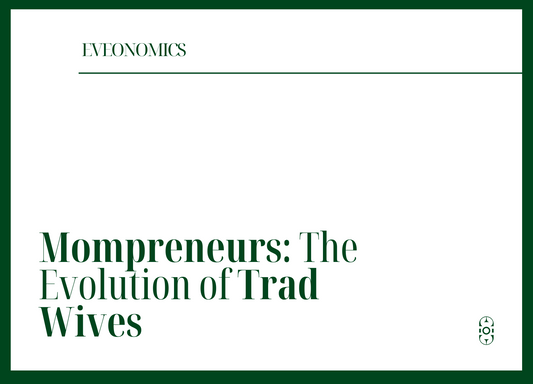Commodities. The word alone conjures a sense of substance—tangible, vital, and primal. Gold glints with the timeless allure of wealth and power. Oil surges through the veins of the modern world, fuelling economies and ambitions alike. Wheat, humble yet essential, reminds us that life itself is tethered to the earth. Commodities are not merely tradable goods; they are the lifeblood of civilisation. Yet behind their apparent simplicity lies a web of complexity that shapes industries, influences geopolitics, and touches every corner of daily life.
What Are Commodities?
At first glance, commodities seem straightforward: physical items of consistent quality, produced in vast quantities, and traded globally. Yet their role is anything but mundane. Divided into categories—metals, energy, agricultural products, and livestock—commodities form the raw materials that underpin human progress.
Metals like gold and silver dazzle not only as adornments but as symbols of economic security. Energy commodities such as oil and natural gas power homes, transport goods, and drive technological advancement. Agricultural products, from coffee to cotton, sustain and clothe billions, while livestock ensures the most basic human need: nourishment.
Their universality is key; an ounce of gold or a barrel of oil is identical regardless of where it originates. This standardisation transforms these raw materials into the foundation of global trade.
The Importance of Commodities
To speak of commodities is to speak of economies. They are not just resources; they are indicators of wealth, stability, and even power. Gold, for instance, becomes a beacon of safety during times of turmoil, a constant amidst the chaos of fluctuating currencies and shifting markets. Oil, on the other hand, is not merely energy but influence, shaping alliances and sparking conflicts.
Commodities also play an intimate role in the ebb and flow of inflation. When currencies falter, the steadfastness of physical goods offers solace. And in international trade, they are the great equaliser: a nation rich in commodities wields them as leverage, while those without must navigate dependence and negotiation.
How Commodities Are Traded
The buying and selling of commodities is as old as civilisation itself. Markets buzz with activity, from local grain exchanges to the sprawling complexity of futures contracts. The latter—agreements to purchase or sell a commodity at a fixed price on a future date—offer both stability for producers and opportunity for investors.
For the uninitiated, the concept of futures markets can feel daunting. Yet, at its core, it is a system designed to bring order to chaos, allowing farmers, miners, and energy producers to plan for the future, even as they gamble on it. Those seeking immediate transactions turn to spot markets, where prices reflect the pulse of the moment.
The Role of Speculation and Market Dynamics
In the world of commodities, speculation is both a blessing and a curse. Speculators bring liquidity to the market, their bets on price movements providing opportunities for profit. Yet they also stir volatility, their actions sending shockwaves through global economies.
Counterbalancing this are the hedgers—those who use commodities to shield themselves from financial risks. A farmer might lock in a price for wheat before the harvest, ensuring stability in an unpredictable world. An airline might secure fuel prices to avoid turbulence in its financials. Together, speculators and hedgers form a dance of risk and reward, their interplay shaping the markets.
What Influences Commodity Prices?
To understand commodities is to understand the forces that move them. Supply and demand reign supreme, but their balance is fragile. A drought in a key agricultural region can send food prices soaring, while geopolitical tensions can disrupt energy supplies overnight.
Currency values also play their part. Commodities priced in US dollars rise and fall with the currency’s strength, creating ripple effects across global markets. Seasonality, too, wields influence—harvests, winters, and even cultural trends leave their mark on prices.
Investing in Commodities
For investors, commodities offer a playground of possibilities. Some are drawn to the physicality of gold bars, their weight a tangible representation of value. Others gravitate towards the abstraction of futures contracts, where fortunes are made and lost on the whims of the market.
More accessible options include commodity-focused ETFs and mutual funds, which allow investors to benefit from diversification without the complexity of direct trading. For those seeking a middle ground, investing in companies that produce commodities—such as mining firms or agricultural conglomerates—offers exposure with the added dimension of corporate growth.
Understanding the Risks
Commodities, while alluring, are not without their challenges. Prices can swing wildly, driven by forces as unpredictable as natural disasters or political unrest. The physicality that makes commodities unique also introduces complications: storing oil or securing grain comes with logistical and financial burdens.
Moreover, commodities are increasingly subject to ethical scrutiny. Mining practices, deforestation, and carbon footprints raise questions about the true cost of these goods. Investors must weigh not only financial returns but also the broader implications of their choices.
Commodities and Portfolio Diversification
Perhaps the greatest strength of commodities lies in their potential for diversification. Unlike stocks and bonds, commodities often move independently of traditional markets, providing a hedge against inflation and economic uncertainty. Gold, long considered a safe haven, retains its lustre in times of crisis, while agricultural and energy commodities offer opportunities tied to tangible, essential needs.
That said, their volatility means they are best approached as a complement to other investments, not a replacement.
A Global Perspective
Commodities touch every aspect of life, from the food on our plates to the energy that powers our homes. Their influence is felt not only in economies but in politics, culture, and the environment. A flood in a farming region or a diplomatic spat in an oil-rich nation sends ripples across the world, reminding us of their profound interconnectedness.
Commodities Paradox
Commodities are, at their core, a paradox. They are simple—grains, metals, fuels—but their impact is anything but. They underpin economies, shape policies, and influence daily life in ways both visible and unseen.
For investors, they represent an opportunity to engage with the fundamental drivers of the global economy. Yet this opportunity comes with responsibility: to understand the risks, weigh the ethical considerations, and approach the market with eyes wide open.
In a world of intangibles, commodities stand as a reminder of what is real. Gold glimmers, oil fuels, wheat sustains—but above all, they endure. And in their enduring presence, they offer a glimpse into the forces that truly shape our world.
Have you started your investing journey? Share your experience in the comments below!
*This article is for general information purposes only and is not financial advice. We are not licensed financial advisors. Please consult a qualified professional before making any investment decisions to ensure they fit your specific financial situation.





